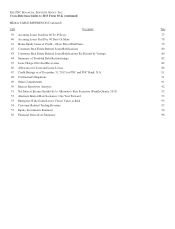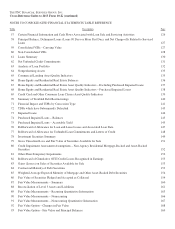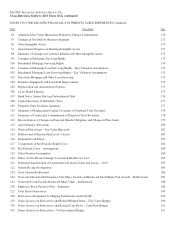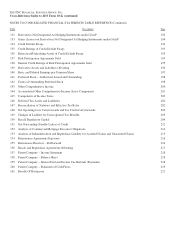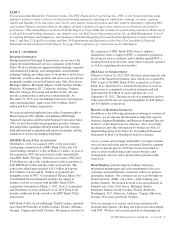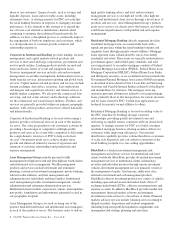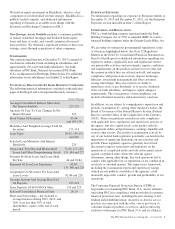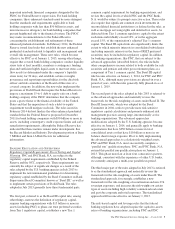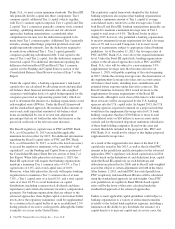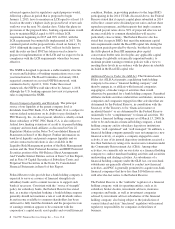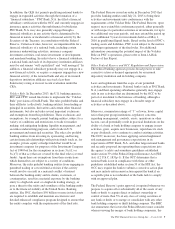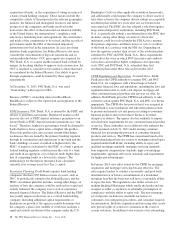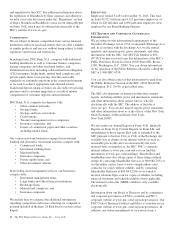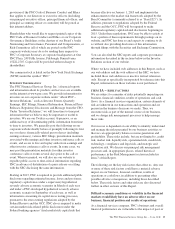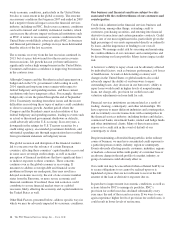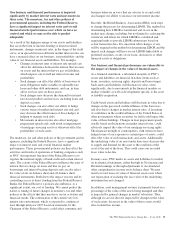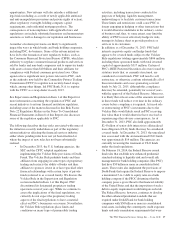PNC Bank 2013 Annual Report Download - page 25
Download and view the complete annual report
Please find page 25 of the 2013 PNC Bank annual report below. You can navigate through the pages in the report by either clicking on the pages listed below, or by using the keyword search tool below to find specific information within the annual report.
termination of deposit insurance by the FDIC, and the
appointment of a conservator or receiver. In some cases, the
extent of these powers depends upon whether the institution in
question is considered “well capitalized,” “adequately
capitalized,” “undercapitalized,” “significantly
undercapitalized” or “critically undercapitalized.” Generally,
the smaller an institution’s capital base in relation to its risk-
weighted or total assets, the greater the scope and severity of
the agencies’ powers, ultimately permitting the agencies to
appoint a receiver for the institution. Business activities may
also be influenced by an institution’s capital classification. For
instance, only a “well capitalized” insured depository
institution may accept brokered deposits without prior
regulatory approval and an “adequately capitalized” insured
depository institution may accept brokered deposits only with
prior regulatory approval. In addition, in order to remain a
financial holding company and engage in the broader range of
financial activities authorized for such a company, PNC and
PNC Bank, N.A. must remain “well capitalized”. At
December 31, 2013, PNC and PNC Bank, N.A. exceeded the
required ratios for classification as “well capitalized.” For
additional discussion of capital adequacy requirements, we
refer you to the Funding and Capital Sources portion of the
Consolidated Balance Sheet Review section of Item 7 of this
Report and to Note 22 Regulatory Matters in the Notes To
Consolidated Financial Statements in Item 8 of this Report.
In addition to these regulatory capital requirements, PNC is
subject to the Federal Reserve’s capital plan rule, annual
capital stress testing requirements and Comprehensive Capital
Analysis and Review (CCAR) process, as well as the annual
and mid-year Dodd-Frank capital stress testing (DFAST)
requirements of the Federal Reserve and the OCC. As part of
the CCAR process, the Federal Reserve undertakes a
supervisory assessment of the capital adequacy of bank
holding companies (BHCs), including PNC, that have $50
billion or more in total consolidated assets. This capital
adequacy assessment is based on a review of a comprehensive
capital plan submitted by each participating BHC to the
Federal Reserve that describes the company’s planned capital
actions during the nine quarter review period, as well as the
results of stress tests conducted by both the company and the
Federal Reserve under different hypothetical macro-economic
scenarios, including a supervisory adverse and a severely
adverse scenario provided by the Federal Reserve. In
evaluating a BHC’s capital plan, the Federal Reserve
considers a number of factors, including the company’s risk
profile, the strength of the company’s internal capital
assessment process, and whether under different hypothetical
macro-economic scenarios, including the supervisory severely
stressed scenario, the company would be able to maintain
throughout each quarter of the nine quarter planning horizon,
even if it maintained its base case planned capital actions, (i) a
projected pro forma Basel I Tier 1 common capital ratio above
5 percent, and (ii) regulatory risk-based and leverage capital
ratios that exceed the minimums that are, or would then be, in
effect for the company, taking into account the capital rules
adopted in July 2013 and any applicable phase-in periods. In
addition, the Federal Reserve evaluates a company’s projected
path towards compliance with the Basel III regulatory capital
framework on a fully implemented basis. After completing its
review, the Federal Reserve may object or not object to the
firm’s proposed capital actions, such as plans to pay or
increase common stock dividends, reinstate or increase
common stock repurchase programs, or redeem preferred
stock or other regulatory capital instruments. In connection
with the 2014 CCAR, PNC filed its capital plan and stress
testing results using financial data as of September 30, 2013
with the Federal Reserve on January 6, 2014. PNC expects to
receive the Federal Reserve’s response (either a non-objection
or objection) to the capital plan submitted as part of the 2014
CCAR in March 2014.
As part of the CCAR and DFAST process, both the Federal
Reserve and PNC release certain revenue, loss and capital results
from their stress testing exercises, generally in March of each
year. For the 2014 exercises, the Federal Reserve has announced
that it intends to publish its supervisory revenue, loss and capital
projections for participating bank holding companies under the
supervisory adverse and severely adverse macro-economic
scenarios using the common assumptions concerning capital
distributions established by the Federal Reserve in its DFAST
regulations (DFAST capital action assumptions), as well as
capital ratio information using the firm’s proposed base case
capital actions. PNC also is required to publicly disclose its own
estimates of certain capital, revenue and loss information under
the same hypothetical supervisory severely adverse macro-
economic scenario and applying the DFAST capital action
assumptions. Federal Reserve regulations also require that PNC
and other large bank holding companies conduct a separate mid-
year stress test using financial data as of March 31st and three
company-derived macro-economic scenarios (base, adverse and
severely adverse) and publish a summary of the results under the
severely adverse scenario in September.
Basel III Liquidity Requirements. The Basel III framework
adopted by the Basel Committee also includes new short-term
liquidity standards (the “Liquidity Coverage Ratio” or “LCR”)
and long-term funding standards (the “Net Stable Funding
Ratio” or “NSFR”).
In October 2013, the U.S. banking agencies requested
comment on proposed rules that would implement the LCR.
The proposed rules are designed to ensure that covered
banking organizations maintain an adequate level of cash and
high quality, unencumbered liquid assets (HQLA) to meet
estimated net liquidity needs in a short-term stress scenario
using liquidity inflow, outflow and maturity assumptions
provided in the rules (net cash outflow). An institution’s LCR
is the amount of its HQLA, as defined and calculated in
accordance with the haircuts and limitations in the rule,
divided by its net cash outflow, with the quotient expressed as
a ratio. Under the proposed rules, banking organizations,
including PNC and PNC Bank, N.A., that are subject to the
The PNC Financial Services Group, Inc. – Form 10-K 7


